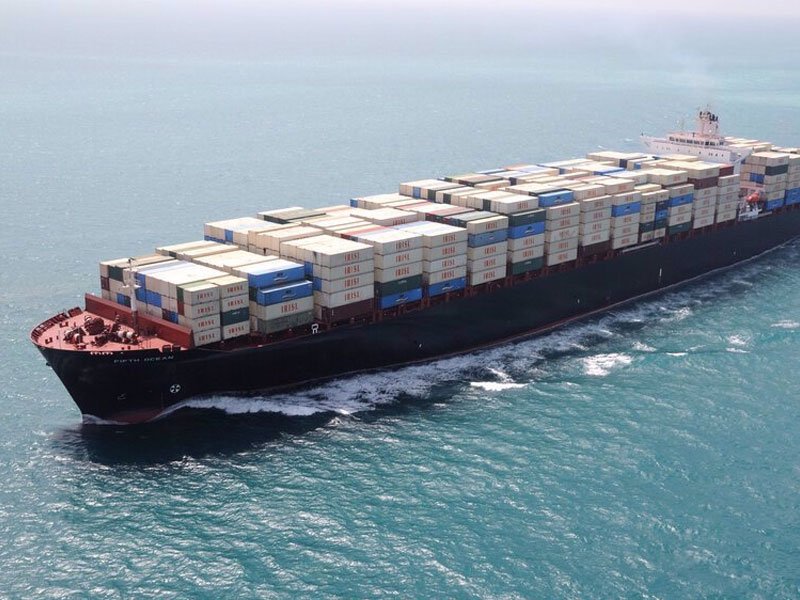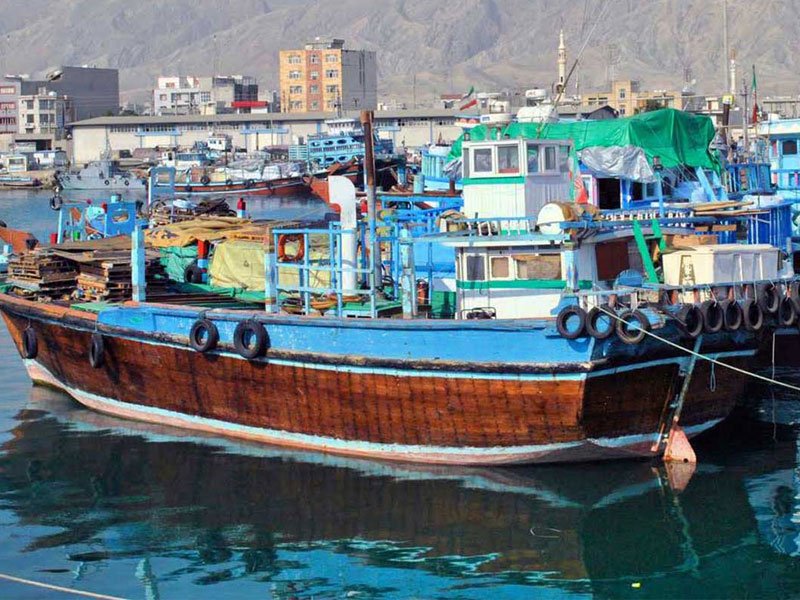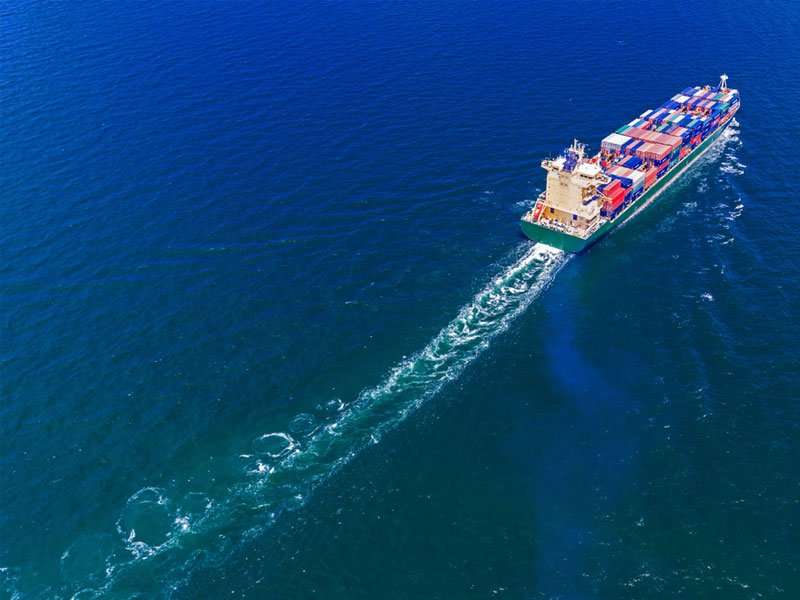Shipping to Iran
Shipping
to Iran
Shipping to Iran, a country steeped in rich history and vibrant culture, demands a nuanced approach due to its unique geopolitical and economic landscape. Whether you are a business looking to export goods or an individual relocating personal belongings, this comprehensive guide will navigate you through the intricacies of shipping to Iran, shedding light on regulations, cultural considerations, and logistical nuances.

Shipping from Spain to Iran
shipping from spain

Shipping from Italy to Iran
shipping from italy

Shipping from India to Iran
shipping from india

Shipping from Türkiye to Iran
shipping from turkey

Shipping from Dubai to Iran
shipping from dubai

Shipping from Germany to Iran
shipping from germany
Understanding the Regulatory Seas
Before setting sail on the shipping journey to Iran, understanding the regulatory framework is paramount. Iran, like any other nation, has specific customs regulations that govern the importation of goods. Familiarize yourself with the required documentation, including invoices, packing lists, and certificates of origin. Stay abreast of any changes in import/export policies to ensure a smooth customs clearance process.
Choosing the Right Shipping Route
Iran boasts a network of well-established ports, each serving as a gateway to different regions of the country. Bandar Abbas, Bushehr, and Chabahar are among the major ports facilitating maritime trade. The choice of port depends on factors such as the origin of your shipment, the type of cargo, and your final destination within Iran. Consider collaborating with a reliable shipping partner who can guide you in selecting the optimal route for your specific needs.
Cultural Currents
Beyond the logistics of shipping, cultural awareness is crucial when dealing with Iran. Respect for local customs and traditions extends not only to your interactions onshore but also to how you package and label your shipments. Understanding the cultural nuances can facilitate smoother interactions with local authorities and enhance the overall success of your shipping venture.

Shipping Documentation and Compliance
The success of any shipping endeavor hinges on accurate and compliant documentation. Ensure that your cargo complies with Iran’s import regulations, and that all paperwork is in order. Work closely with shipping and logistics experts who can guide you through the process of obtaining the necessary permits, licenses, and certifications required for a seamless transit.
Economic Opportunities and Challenges
Iran’s economy presents both opportunities and challenges for international trade. The lifting of certain sanctions has opened avenues for business and trade, but it’s essential to stay informed about the economic landscape. Be mindful of fluctuations in currency exchange rates and be prepared to navigate potential hurdles that may arise due to geopolitical dynamics.
Collaborating with Reliable Partners
In the vast seas of international shipping, having a reliable partner can be the beacon that guides your vessel. Collaborate with reputable shipping companies, freight forwarders, and customs brokers with experience in handling shipments to Iran. A trustworthy partner not only ensures the safety and timely delivery of your cargo but can also provide valuable insights into the ever-changing landscape of international trade.
Challenges and Solutions in Shipping to Iran
As with any maritime journey, shipping to Iran is not without its challenges. This section delves into common obstacles faced by shippers, ranging from regulatory complexities to geopolitical uncertainties. It also provides insights and strategies to navigate these stormy seas successfully, ensuring a resilient and adaptable shipping strategy.

Regulatory Compliance in Shipping to Iran
Understanding and adhering to the legal framework governing international trade with Iran is paramount. This segment delves deeper into the intricacies of sanctions, export controls, and other legal considerations that may impact your shipments. Navigating these legal labyrinths requires a thorough understanding of both Iranian and international trade laws, emphasizing the importance of legal counsel to ensure compliance.
Whether shipping industrial machinery, consumer goods, or perishable items, each type of cargo comes with its own set of considerations. This section explores the specific challenges and solutions associated with diverse cargoes. From temperature-sensitive shipments to those requiring specialized handling, understanding the unique demands of your cargo is essential for a successful voyage.
Technology's Role in Modern Shipping to Iran
In the era of Industry 4.0, technology is revolutionizing the shipping industry. This part of the guide explores the role of digital tools, such as blockchain for secure documentation, IoT for real-time tracking, and data analytics for route optimization. Leveraging these technological advancements can enhance the efficiency, transparency, and security of your shipments to Iran.
Building Strong Business Relationships in Iran
Beyond the paperwork and logistics, building strong business relationships in Iran is integral to successful shipping. This section sheds light on cultural nuances, business etiquettes, and the importance of relationship-building. Understanding the Iranian business culture fosters trust and opens doors to collaborations that extend beyond individual transactions.
The seas of sustainable shipping practices are gaining prominence worldwide. This section explores how the shipping industry is embracing environmentally friendly initiatives and how you can contribute to sustainable practices when shipping to Iran. From eco-friendly packaging to choosing carriers with a commitment to reducing their carbon footprint, sustainability is a key consideration in modern shipping.
The maritime landscape is ever-evolving, and this section examines emerging trends that may shape the future of shipping to Iran. From advancements in container technology to the potential impact of geopolitical shifts, staying informed about these trends ensures that your shipping strategy remains agile and adaptive to the evolving dynamics of the global trade arena.

Shipping from China to Iran
shipping from china
Ground Freight
Shipping ground freight from China
Ocean Freight
Shipping by sea from China
Air Freight
Air freight shipping from China
Shipping to Iran Regulations
Shipping to Iran involves traversing a complex regulatory landscape shaped by international sanctions, trade laws, and the unique geopolitical environment of the region. Understanding and complying with these regulations are crucial to ensure a smooth and legally sound shipping process. Here’s a comprehensive guide to the key regulations governing shipping to Iran:
International Sanctions: Charting the Restricted Waters
Iran has been subject to various international sanctions, primarily due to concerns about its nuclear program and other geopolitical considerations. These sanctions have implications for the shipping industry, influencing the type of goods that can be shipped, the entities with which you can engage in business, and the financial transactions associated with shipping.
Key Points:
U.S. Sanctions: The United States, in particular, has implemented comprehensive sanctions on Iran. It’s vital to be aware of and comply with U.S. laws, including the Iran Sanctions Act (ISA) and the Comprehensive Iran Sanctions, Accountability, and Divestment Act (CISADA).
United Nations Sanctions: The UN has also imposed sanctions on Iran, although they have evolved over time. Staying informed about UN resolutions and their impact on shipping is essential.
Export Controls: Navigating Goods and Technologies
Export controls regulate the export of certain goods and technologies to Iran to prevent their use in activities such as nuclear proliferation or the development of weapons. These controls vary by country, and it’s crucial to be aware of and comply with the export control regulations of your home country and any intermediary countries involved in the shipping route.
Key Points:
Dual-Use Items: Certain items that have both civilian and military applications may be subject to export controls. Ensure compliance with export control lists and obtain the necessary licenses if required.
End-User Certifications: Some countries may require end-user certifications to verify that the exported goods will not be used for prohibited purposes in Iran.
Customs Procedures: Sailing Through Documentation
Customs procedures in Iran involve the submission of various documents for the importation of goods. Ensuring that you have the correct and complete documentation is critical for a smooth customs clearance process.
Key Points:
Required Documents: Typical documents include commercial invoices, packing lists, certificates of origin, bill of lading, and any relevant certificates or licenses.
Customs Valuation: Familiarize yourself with Iran’s customs valuation methods, as the valuation of goods can impact duties and taxes.
Banking and Financial Transactions: Navigating the Financial Currents
Due to international sanctions, financial transactions related to Iran can be subject to restrictions. Understanding and complying with these restrictions are essential to avoid legal repercussions.
Key Points:
Use of Designated Banks: Ensure that you use financial institutions that are not subject to sanctions. Many Iranian banks are subject to restrictions, so it’s crucial to work with banks that comply with international regulations.
Currency Restrictions: Be aware of any restrictions on the use of specific currencies in financial transactions related to Iran.
Special Considerations: Navigating Sensitive Cargo
Certain types of cargo, such as military equipment, controlled technologies, or items with potential dual-use applications, may be subject to additional regulations. It’s essential to be aware of any special considerations and obtain the necessary licenses or approvals.
Key Points:
Military and Dual-Use Items: Check whether your cargo falls under restricted categories and obtain the required permissions.
Sanctioned Entities: Be vigilant about conducting due diligence on entities involved in the shipping process to ensure compliance with sanctions.
Seeking Professional Guidance: Charting a Safe Course
Given the complexity of shipping regulations to Iran, seeking professional guidance is highly advisable. Engage with legal experts specializing in international trade and sanctions, as well as experienced freight forwarders with knowledge of the specific challenges associated with shipping to Iran.

Kinds of Shipping to Iran
Shipping to Iran involves a diverse range of cargo and transportation needs, prompting the utilization of different modes of shipping to cater to various requirements. From the vast expanse of the seas to the efficiency of the skies, here’s an exploration of the kinds of shipping methods employed when navigating the shipping routes to Iran.
1. Ocean Freight: The Maritime Mainstay
Overview: Ocean freight is the backbone of international trade, and it holds true for shipping to Iran as well. Given Iran’s strategic location along the Persian Gulf and the Caspian Sea, ocean freight plays a pivotal role in the transportation of goods.
Types of Ocean Freight:
Full Container Load (FCL): Ideal for larger shipments, FCL involves dedicated containers for a single shipper.
Less than Container Load (LCL): Suitable for smaller shipments, LCL allows multiple shipments to share a single container.
Advantages:
Cost-Effective: Ocean freight is often cost-effective for large and heavy shipments.
Bulk Cargo: Well-suited for bulk and oversized cargo, common in project cargo logistics.

2. Air Freight: The Swift Solution
Overview: When time is of the essence, air freight emerges as the swiftest solution. Though typically more expensive than ocean freight, it provides rapid and secure delivery.
Advantages:
Speed: Air freight ensures faster transit times, crucial for time-sensitive shipments.
Accessibility: Suitable for goods with high value or perishable items that require quick delivery.
Considerations:
Cost: Air freight can be more expensive, making it optimal for specific types of cargo.
Weight and Size Limitations: Larger and heavier cargo may be more efficiently transported by sea.
3. Road Freight: Overland Connections
Overview: For neighboring countries or those with efficient overland connections, ground freight serves as a practical and cost-effective option.
Advantages:
Accessibility: Well-suited for transporting goods across land borders, especially from neighboring countries.
Flexibility: Allows for door-to-door delivery, offering convenience in the last-mile logistics.
Considerations:
Distance Limitations: More suitable for shorter distances due to potential delays at borders.
Infrastructure: The efficiency of road freight depends on the quality of road infrastructure.
4. Rail Freight: Connecting Continents
Overview: Rail freight serves as a land-based alternative for international cargo transportation, connecting distant regions.
Advantages:
Efficiency: Can be more time-efficient than sea freight for certain distances.
Sustainability: Generally considered more environmentally friendly than air freight.
Considerations:
Rail Network Availability: The efficiency of rail freight depends on the existence and quality of rail networks.
Transshipment Points: Depending on the route, transshipment points may be necessary.
5. Multimodal Shipping: Seamlessly Integrated Solutions
Overview: Multimodal shipping combines different modes of transportation in a coordinated manner, offering a seamless end-to-end solution.
Advantages:
Optimization: Allows for the optimization of cost, time, and logistics efficiency.
Versatility: Well-suited for complex logistics scenarios, such as shipping to landlocked areas.
Considerations:
Coordination: Requires effective coordination between different modes of transportation.
Infrastructure Compatibility: Efficiency depends on the compatibility of infrastructure at transition points.
Shipment to Iran
Shipping to Iran involves a detailed process that must comply with international regulations and local customs laws. Whether it’s commercial cargo, personal goods, or specialized freight, choosing the right freight forwarder is essential to ensure safe and timely delivery. Iran’s strategic location and access to multiple ports like Bandar Abbas make it a key destination for both sea and air freight. However, due to sanctions and international trade restrictions, it’s important to work with logistics providers who have experience in handling documentation and understand the complexities of Iranian import requirements.
For businesses and individuals, the most common shipping methods to Iran are air freight for urgent or high-value goods and sea freight for bulk or cost-sensitive cargo. Air freight provides faster transit times through major airports such as Tehran Imam Khomeini International Airport, while sea freight is often used for large shipments via the Persian Gulf. Reliable tracking, insurance options, and proper packaging are all critical for ensuring smooth transit. Working with experienced shipping companies familiar with Iran’s logistics landscape helps avoid delays, customs issues, or unexpected costs.
Choosing the Right Course
In navigating the waves of shipping to Iran, the choice of shipping method depends on various factors, including the type of cargo, urgency, cost considerations, and the geographic location of the origin and destination. By understanding the advantages and considerations associated with each mode of shipping, businesses and individuals can chart a course that aligns with their specific needs, ensuring a successful and efficient shipping journey to Iran.
Conclusion
Shipping to Iran is a journey that requires careful navigation through regulatory waters, cultural currents, and economic tides. By understanding the nuances of shipping to this diverse and dynamic nation, you can set sail with confidence, knowing that your cargo will reach its destination securely and in compliance with all relevant regulations. Bon voyage to your shipping venture to Iran — may it be smooth sailing on the seas of international trade.
FAQs
Shipping to Iran involves navigating a complex regulatory landscape. It’s essential to be aware of international sanctions, export controls, and customs procedures. Understanding the legal framework governing trade with Iran and staying compliant with both international and Iranian regulations is crucial for a smooth shipping process.
Various modes of transportation are employed for shipping to Iran. Ocean freight is commonly used due to Iran’s strategic maritime location. Additionally, air freight provides a swift solution, while road and rail freight offer overland connections. Multimodal shipping, combining different modes seamlessly, is also an option for optimizing logistics.
Ensuring the security of shipments involves careful planning and collaboration with reliable partners. Choose reputable shipping companies and freight forwarders with experience in the region. Implement security measures, such as secure packaging and tracking systems, to safeguard your cargo during transit. Stay informed about the latest security protocols and updates.
Customs clearance is a crucial aspect of shipping to Iran. Ensure that you have all the required documentation, including commercial invoices, packing lists, certificates of origin, and any necessary permits or licenses. Familiarize yourself with Iran’s customs procedures and valuation methods to facilitate a smooth clearance process.
Understanding and respecting the cultural nuances of Iran is important for successful shipping. Be mindful of cultural etiquette in your communication and documentation. It’s advisable to work with partners who have experience in the region to navigate any cultural considerations effectively. Building strong relationships based on cultural understanding can enhance the success of your shipping endeavors.
The most common shipping methods are air freight, used for fast and valuable shipments, and sea freight, ideal for bulk and heavy cargo. Some land freight routes are also available for neighboring countries.
Yes, certain items such as military equipment, high-tech electronics, alcohol, and politically sensitive materials are restricted or prohibited. Always check with a reliable freight forwarder to ensure compliance with current regulations.
Yes. You typically need a commercial invoice, packing list, bill of lading or airway bill, and in many cases, import permits or licenses depending on the product. Proper documentation helps avoid customs delays or fines.
Shipping times vary: air freight usually takes 3–7 days, while sea freight can take 2–5 weeks depending on the origin, port congestion, and customs clearance speed in Iran.
Most professional freight forwarders offer real-time tracking for both air and sea shipments. Make sure to use a logistics provider with modern tracking systems for full visibility and peace of mind.



I have a shipment that I need to send from Russia to Iran. How should I coordinate with you?
Hi! Thank you for reaching out. To coordinate the shipment from Russia to Iran, please provide me with the details of the shipment, including the nature of the goods, size, weight, and any specific requirements. Once I have this information, I can assist you in arranging the logistics and facilitating the shipment process. Looking forward to working together!
I am pleased that I observed this weblog, precisely the right info that I was searching for! .
Hello,
My name is Fatema Shaikh. I want to ship around 20 boxes to Iran from Dubai.
Its volume is approx 1.6 CBM.
Please provide the price.
Thankyou,
Fatema
email : fatemaismailshaikh@gmail.com
Dear Fatema ,
AEJEA to IRBND rate is around USD200/20’ .
For more precise quotation Please send the shipment details to info@lianvisman.com we will quote the rate at the soonest .